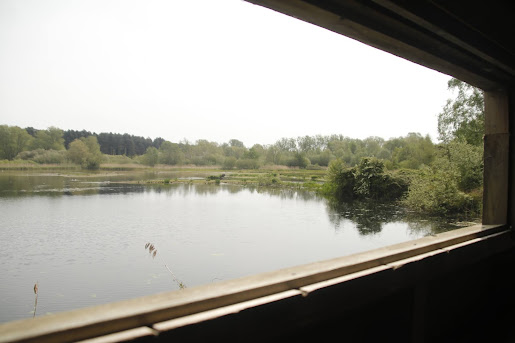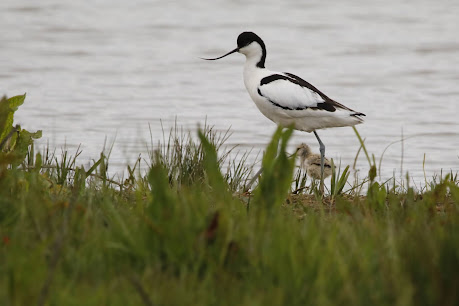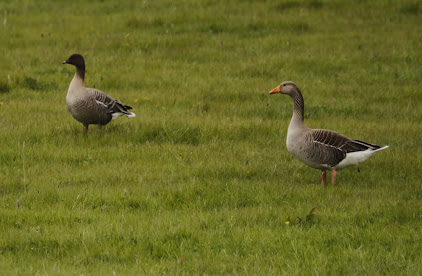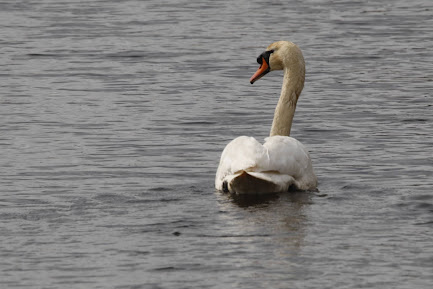Its been such a long time since I last went to Lackford, some time before the pandemic dropped, way back in 2020. The Lakes form a large Suffolk Wildlife rust reserve, created from gravel pits with a large area of peripheral marshland. The reserve is important because the lakes like those found here are rare in Suffolk, and as a result the reserve is important for its wintering ducks, with some of the largest flocks in the county. But away from the winter, on a beautiful late May day, the seasons have passed, migration has started to slow down, and now birds are focused on reproduction.
Lackford with its variety of habitats has a large number of breeding birds. Most of them are water and marsh type birds as you would expect. The most distinct bird on today's visit was the CUCKOO. This marauding parasite of other bird's nest birds was definitely making itself heard. Its call could be heard from every corner of the reserve, it definitely provided the soundtrack to Lackford today. There must have been a couple of males present on site to be so sonically ubiquitous. A brief fly-past from Bernard's Hide was the only chance I had of seeing the bird, the pointed wings and long tail making it look like a bird of prey, and for such a loud birds they are quite hard birds to see.
The Slough was the focal point for water birds as it usually is whatever time of year. With its mix of shallow and deep water, grassy islands, and reedy fringes, this lake provides a full range of habitats. Ten pairs each of TUFTED DUCK, GADWALL and SHELDUCK were present, although no chicks were present. The shelduck were particularly rambunctious with birds constantly squabbling over territory and possibly who mates with who. Two male POCHARD present here were unusual as these birds don't often oversummer at Lackford, this bird is a very rare breeder in Suffolk. There were small numbers of duck on the other lakes but not nearly as many as on the Slough.
One of the features of summer at Lackford is the large flock of SWANS that spend the longer months on the Sailing Lake, the largest lake, with close to a hundred present at times. It was a bit early in the season for such large numbers today, but there were still around thirty present as numbers start to build up. Also present, and swan related, were a lovely swan brood of four grey cygnets, surprisingly the only ones on the entire reserve, although there were several more pairs on different lakes around the site.
Although we are still in the latter stages of lockdown, a time where everything has been shut down due to the pandemic, most things were now open. When I arrived the car park was busy so I was worried the reserve would be too busy, but as is usual, the further you get from the visitor centre, and the café the number of people diminish. Limits on places in hides were in place but this only really applied to Bernard's hide, the second hide overlooking the Slough. This hide is always the most busy as people look to photograph the kingfishers found there. No kingfishers were present, but a male MARSH HARRIER at the back of the Slough and a flyby CUCKOO made it worth the wait.
Lackford can be very peaceful, I often found myself alone amongst nature. Ash Carr an area of overgrown wet woodland, was alive with birdsong, yet at the same time felt so tranquil, like a stone age stereo sound system, one that brought me back to ancient times. In this area of woodland is The Stump, an old fallen tree. The Stump is a great place for photography with birds close by ready to pose for a shot. Today I brought some seeds and placed it on the bark to attract said birds. Nothing showed up to begin with, so I walked off to look at the Eastern Lakes, but on the way back I found it was busy with SQUIRRELS, BLACKBIRDS, TITS, and best of all, two NUTHATCHES. One thing that's certain about Lackford is that it is one of the best reserves in the country for photography.
The Eastern Lakes, large and more open, were quiet. They are often either full of bird or are either empty. On the artificial rafts place out on Hawker Pool, two COMMON TERNS were nesting, keeping company with ten BLACK HEADED GULLS, who also had two chicks. Further more on an island on Plover lake around twenty pairs of black heads were nesting with five pairs on Wilson's Flood. Black heads tens to dominate suitable nesting places and are very aggressive.
Having lots of overgrown marshy areas Lackford is great for the smaller birds, with brown REED WARBLERS everywhere, CETTI'S WARBLERS belting their song from an overgrown patch and REED BUNTINGS providing the colour. A KINGFISHER was seen at the furthest hide, Steggall's, as usual heard first and then seen dashing past at break neck speed, before speeding out of sight. Plover Lake as seen from Steggall's hide was the area for the only GREAT CRESTED GREBE family in the reserve, and as is usual for this species the one stripy necked chick was riding on its parent's back, with the other parent busy feeding it.
So all in all a pleasant day over in West Suffolk, with a few decent birds thrown in as well. Lackford Lakes is always a good place to visit, as there is always something good to see. Sure compared to the coastal reserves it doesn't have the rarities, or the range of habitats on such a large scale. But as the main area of inland lakes in Suffolk it provided the kind of bird rare in other areas of the county. And then there's the fact that its such a great place to take photographs of birds, probably the best in Suffolk. That is what makes the reserve really stand out, providing an extra dimension to our glorious hobby.




















































